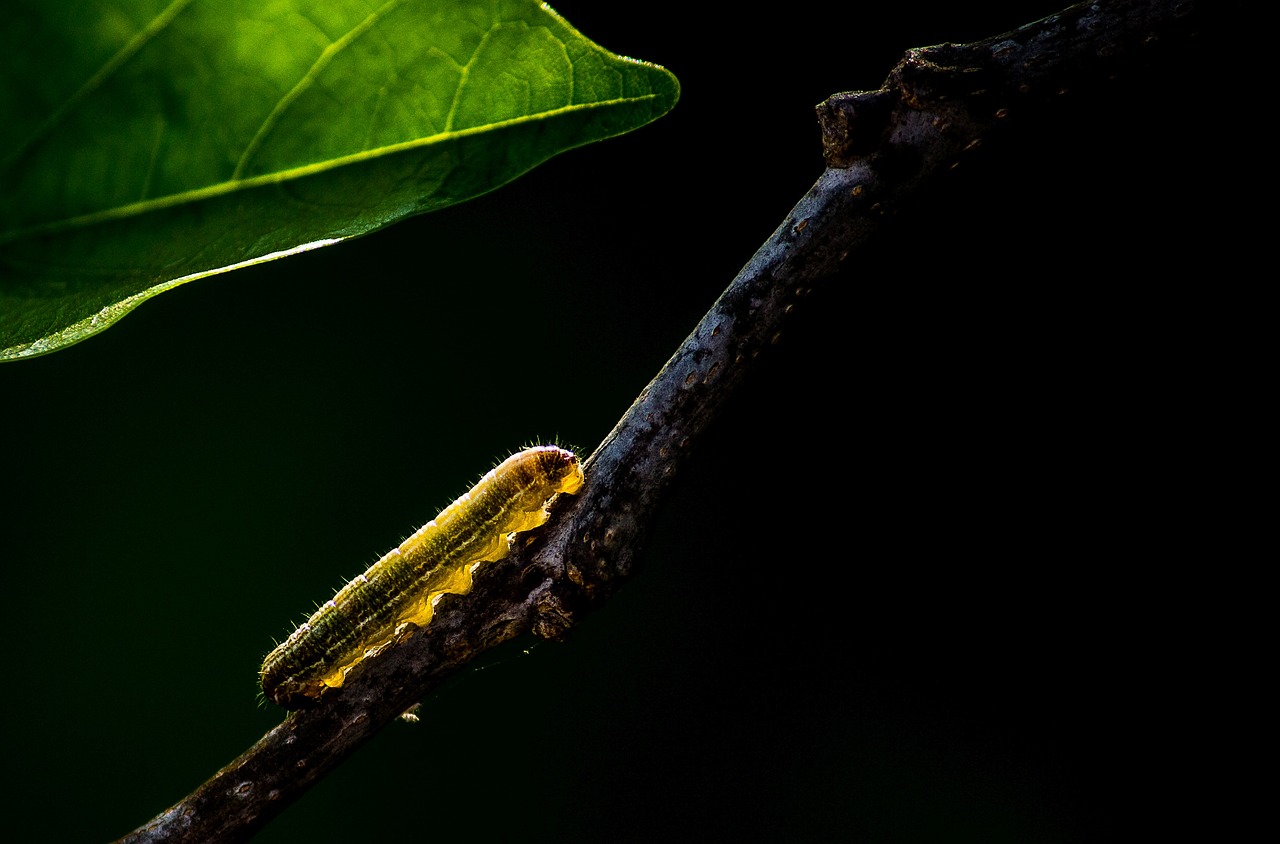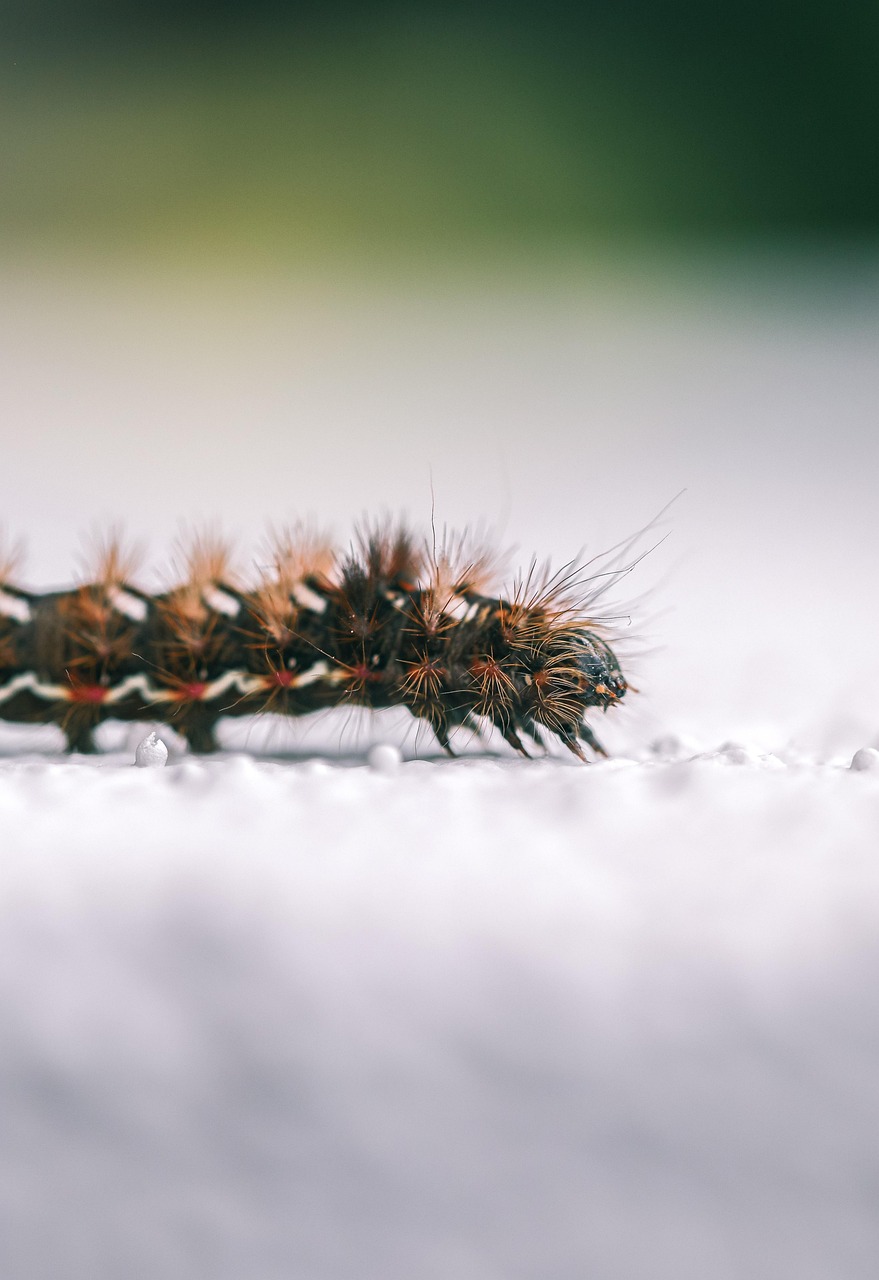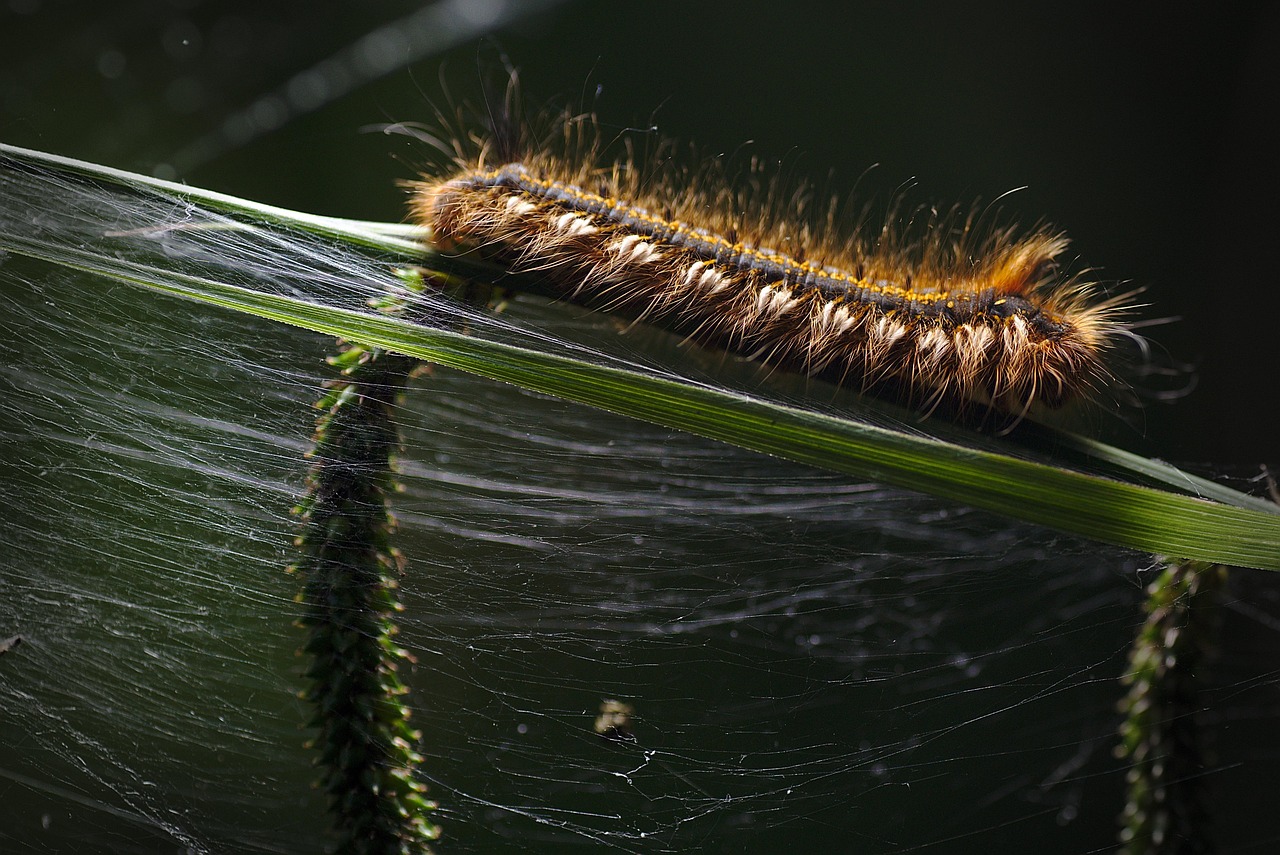Understanding how to identify striped caterpillars can enhance your appreciation of these fascinating creatures. Their distinctive patterns not only serve as camouflage but also indicate their relationship to butterflies and moths. This article will help you uncover the secrets of these patterned crawlers.
Caterpillars are the larval stage of butterflies and moths, belonging to the order Lepidoptera. Striped caterpillars, in particular, are known for their vibrant colors and unique patterns, which can vary significantly between species. Identifying these caterpillars is crucial for both enthusiasts and researchers, as it can provide insights into their ecological roles and dietary preferences.

Many striped caterpillars are not just visually striking; they can also be important indicators of environmental health. Observing their populations can offer clues about local biodiversity and ecosystem stability. However, distinguishing between different species can be challenging without a keen eye for detail.
| Species | Color Pattern | Diet | Host Plants |
|---|---|---|---|
| Black Swallowtail Caterpillar | Green with yellow and black stripes | Herbaceous plants | Carrots, parsley, dill |
| Tiger Moth Caterpillar | Black with white or yellow stripes | Various plants | Willows, asters |
| Luna Moth Caterpillar | Green with white stripes | Leaves | Walnut, hickory |
| Io Moth Caterpillar | Green with yellow stripes and spines | Leaves | Willow, hackberry |
Identifying Striped Caterpillars
To accurately identify striped caterpillars, one must observe several characteristics. These include color, size, and location. Additionally, understanding their life cycles and preferred habitats can greatly assist in identification efforts.
The first step in identifying a striped caterpillar is to examine its physical attributes. Many caterpillars display vibrant colors which can serve as warning signals to predators. Some may even change color as they mature. For instance, younger caterpillars often have different coloration compared to their older counterparts.
Color Patterns and Their Meanings
The color patterns of striped caterpillars can indicate various traits. Stripes may serve as camouflage against predators or as warning signals to signify toxicity. Here are some common meanings of color patterns:
- Bright Colors: Often indicate potential toxicity or unpalatability.
- Dull Colors: Typically serve as camouflage to blend into their surroundings.
- Striped Patterns: Can confuse predators by disrupting the outline of the caterpillar.
The environment where the caterpillar is found also plays a vital role in identification. Different species prefer specific habitats, which can range from forests to gardens. Observing the plants nearby can also provide clues about the caterpillar’s identity.
Life Cycle Insights
Caterpillars undergo a fascinating transformation known as metamorphosis, changing from eggs to larvae and finally into adults. Understanding this life cycle is essential for accurate identification:
- Egg Stage: Tiny eggs are often laid on the host plant.
- Caterpillar Stage: This is the feeding stage where they grow rapidly.
- Pupal Stage: The caterpillar forms a chrysalis or cocoon.
- Adult Stage: Finally, they emerge as butterflies or moths.
This life cycle not only emphasizes the importance of host plants but also highlights the critical stages at which these creatures can be observed and identified. By paying attention to their growth phases and appearances, you can become more adept at recognizing these striped crawlers in your environment.
Behavioral Traits of Striped Caterpillars
Understanding the behavior of striped caterpillars can greatly assist in their identification. Their movements, feeding habits, and interactions with their environment provide additional clues about the specific species. Observing these behaviors can enhance your overall knowledge and appreciation of these insects.
Movement and Feeding
Striped caterpillars exhibit various movement patterns, often influenced by their environment and the presence of potential threats. When disturbed, many species will drop to the ground or become motionless to avoid detection. This behavior helps them blend into their surroundings, making it difficult for predators to spot them.
Feeding is crucial for a caterpillar’s growth. Most striped caterpillars are herbivorous, consuming a wide range of plants. Here are some common feeding behaviors:
- Grazing: Many caterpillars feed on the leaves of host plants, often consuming entire sections.
- Leaf Mining: Some species create tunnels within leaves, feeding on the inner tissues.
- Silk Production: Certain caterpillars produce silk to help anchor themselves while feeding or to create shelters.
Defense Mechanisms
Striped caterpillars have evolved various defense mechanisms to protect themselves from predators. These adaptations can be fascinating to observe:
- Camouflage: Many striped caterpillars have colors and patterns that help them blend into their surroundings.
- Toxicity: Some species are toxic, warning predators with bright colors, signalling that they are unpalatable.
- Spines and Hairs: Certain caterpillars possess spines or hairs that can deter predators or cause irritation.
Common Striped Caterpillar Species

Several striped caterpillar species are commonly found in various habitats. Each species exhibits unique characteristics that make them identifiable. Below are a few notable species:
| Species Name | Description | Habitat | Notable Features |
|---|---|---|---|
| Cabbage Looper | Green with white stripes | Gardens, fields | Distinctive looping movement when crawling |
| Fall Webworm | Greenish with yellow stripes | Trees, shrubs | Forms web-like structures in tree branches |
| Gypsy Moth Caterpillar | Dark with white and blue spots | Forests, urban areas | Long bristles and distinctive coloration |
| Hickory Horned Devil | Green with red horns | Deciduous forests | Largest caterpillar in North America, intimidating appearance |
Each of these species plays a role in its ecosystem. Some contribute to plant health by acting as pollinators in their adult form, while others serve as prey for various animals. Understanding their characteristics can aid in recognizing them in the wild.
Environmental Impact and Importance

The presence of striped caterpillars can indicate the health of an ecosystem. These insects are often sensitive to changes in their environment, which makes them useful indicators for conservation efforts. Their interactions within food webs highlight their importance in maintaining ecological balance.
Caterpillars also serve as a food source for numerous predators, including birds, small mammals, and other insects. This dynamic relationship underscores the role of striped caterpillars within food chains.
Caterpillars and Plant Relationships
The relationship between striped caterpillars and their host plants is critical for their survival. These caterpillars often have specific plant preferences, which influence where they lay their eggs. Understanding these relationships can help in habitat preservation:

- Diversity of Host Plants: Some caterpillars can feed on a variety of plants, while others are highly specialized.
- Impact of Pesticides: The use of pesticides can significantly affect caterpillar populations and their host plants.
- Conservation Efforts: Protecting native plants is essential for sustaining local caterpillar populations.
The interplay between striped caterpillars and their environment highlights the need for awareness and conservation efforts to ensure the survival of these unique creatures. By learning about their behaviors and habitats, we can contribute to the preservation of biodiversity.
Striped Caterpillars in Their Natural Habitats
Striped caterpillars can be found in a variety of habitats, each offering unique conditions that influence their development and behavior. Understanding these environments is essential for identifying the various species and their ecological roles. Different habitats provide distinct food sources and shelter, which caterpillars rely on throughout their life cycles.
Types of Habitats
Striped caterpillars thrive in numerous environments, including forests, gardens, fields, and wetlands. Each habitat supports different species, showcasing a range of adaptations.
- Forests: Dense foliage provides ample food sources and protection from predators. Many species, such as the Hickory Horned Devil, are commonly found in deciduous forests.
- Gardens: Cultivated areas often host striped caterpillars like the Cabbage Looper, which thrives on common garden plants. These caterpillars can sometimes become pests due to their feeding habits.
- Fields: Open fields provide opportunities for caterpillars to feed on wildflowers and grasses. Species such as the Gypsy Moth Caterpillar may be found in these areas.
- Wetlands: The moist conditions in wetlands support a variety of plant life, attracting species that feed on aquatic vegetation or nearby flora.
Seasonal Variations
The availability of striped caterpillars can fluctuate with the seasons. Understanding these seasonal patterns is crucial for effective identification:
- Spring: Many caterpillars emerge from eggs laid over the winter. As temperatures rise, they begin to feed actively on fresh plant growth.
- Summer: This is typically the peak season for striped caterpillars. They grow rapidly during this time, often reaching maturity before the onset of fall.
- Autumn: As temperatures cool, some caterpillar species prepare for their pupal stage. Others may seek shelter or migrate to survive the winter.
- Winter: Many caterpillars enter diapause, a period of dormancy. Some may remain hidden in cocoons or as eggs, awaiting warmer weather.
The Role of Striped Caterpillars in Ecosystems
Striped caterpillars play significant roles in their ecosystems. Their interactions with plants and other wildlife create complex relationships that contribute to ecological balance.
Pollination and Plant Health
While caterpillars are primarily known for their feeding habits, they also contribute indirectly to pollination. As they feed on plants, they may inadvertently transfer pollen from one flower to another. This activity can enhance plant reproduction and health.
Caterpillars also help maintain healthy ecosystems by influencing plant dynamics. Their feeding can control plant populations, ensuring that no single species dominates an area. This can promote biodiversity within habitats.
Caterpillars as Prey
Striped caterpillars are an essential food source for many predators, including birds, reptiles, and mammals. Their presence supports a diverse range of wildlife:
- Birds: Many bird species rely on caterpillars as a primary food source during nesting season when they require high-protein diets for their young.
- Mammals: Small mammals, such as rodents, may also consume caterpillars when available.
- Insects: Various predatory insects, including wasps and beetles, prey on caterpillars as part of their life cycles.
This predator-prey relationship illustrates the interconnectedness of ecosystems. By serving as a food source, striped caterpillars contribute to the survival of numerous species, highlighting their ecological importance.
Cultural Significance of Striped Caterpillars
The presence of striped caterpillars also holds cultural significance in various societies. They are often symbols of transformation and change due to their metamorphic life cycle. This transformation from caterpillar to butterfly is frequently used as a metaphor in literature and art.
In many cultures, butterflies symbolize hope and renewal. Consequently, striped caterpillars serve as reminders of nature’s beauty and the importance of protecting our environment. They also inspire educational programs focused on ecology and conservation.
By understanding the cultural significance of striped caterpillars, we can foster a greater appreciation for these remarkable insects and encourage practices that support their habitats and populations.
Conservation Challenges and Efforts
While striped caterpillars play vital roles in ecosystems, they face numerous challenges that threaten their populations. Urbanization, habitat destruction, climate change, and pesticide use are significant factors affecting their survival. Understanding these challenges is crucial for implementing effective conservation strategies.
Habitat Loss
As cities expand and agricultural practices intensify, natural habitats are increasingly fragmented or destroyed. This loss of habitat limits the availability of host plants essential for caterpillar survival. Additionally, urban areas may not provide the necessary resources for caterpillars to thrive.
Climate Change
Climate change poses another critical threat to striped caterpillars. Fluctuating temperatures can disrupt their life cycles and feeding patterns. Many caterpillars rely on specific seasonal cues for mating and feeding, and changes in temperature or precipitation can lead to mismatches in timing with their host plants.
Pesticide Use
The widespread use of pesticides in agriculture can have detrimental effects on striped caterpillar populations. These chemicals not only target pests but can also harm beneficial insects, including caterpillars. Reducing pesticide use and promoting organic farming practices can significantly help protect these insects.
Encouraging Striped Caterpillar Populations
There are several ways individuals and communities can contribute to the conservation of striped caterpillars and their habitats:
- Create Butterfly Gardens: Planting native flowers and host plants can attract striped caterpillars and provide them with food sources.
- Reduce Chemical Use: Limiting the use of pesticides and herbicides in gardens promotes a healthier environment for caterpillars and other beneficial insects.
- Participate in Citizen Science: Engaging in local monitoring projects helps track caterpillar populations and raises awareness about their ecological importance.
- Educate Others: Sharing knowledge about striped caterpillars fosters appreciation for these insects and encourages conservation efforts within communities.
Final Thoughts
Striped caterpillars are not just interesting insects; they are integral components of our ecosystems. Their unique patterns, fascinating life cycles, and interactions with plants highlight the complexity of nature. By understanding their behaviors, habitats, and the challenges they face, we can work towards preserving these remarkable creatures.
Cultural perspectives surrounding striped caterpillars further emphasize their significance in human society. Recognizing their role as symbols of transformation encourages us to appreciate the beauty of nature and the importance of environmental stewardship.
As we move forward, it is essential to advocate for practices that protect not only striped caterpillars but all species that contribute to our planet’s biodiversity. Together, we can create a sustainable future where these patterned crawlers continue to thrive in their natural habitats.
